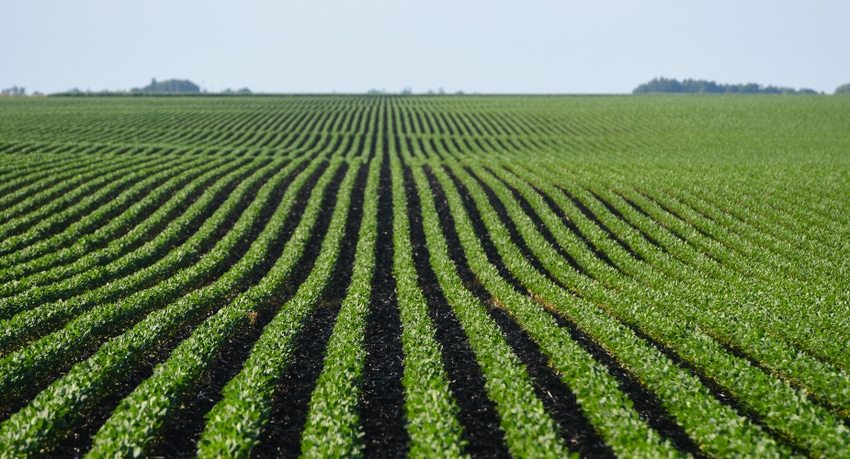November 29, 2017

By Allie Arp, ISA research communications specialist
Dicamba isn’t impacting the majority of farmers, but that doesn’t mean they’re not worried about it. In a recent survey conducted by the Iowa Soybean Association, less than a third of farmers expect their yields to be negatively affected by dicamba, but it was at the top of the list of concerns for 2018 growing season.
“Iowa soybean farmers have communicated a range of Dicamba experiences during the 2017 growing season,” said Ed Anderson, ISA senior director of research. “Some had great success, others experienced minor off-target plant symptoms and some expressed rather significant concern about off-target crop damage and possible negative yield impacts.”
Additional findings from the survey included what farmers were most worried about regarding dicamba and an overview of their yields so far in 2017. The full answers are below.
When asked if they thought their non-dicamba tolerant soybean fields would be impacted by dicamba, 58 percent didn’t expect any sort of affect, 31 percent expected their yield to be affected negatively and 10 percent expected their yields to be affected positively. When the question was about their neighbors, 44 percent of respondents knew someone that would be negatively affected, 31 percent didn’t know anyone who would be affected and 10 percent knew someone who would be positively affected.
“While the survey results are interesting and indicative of experiences and observations in the field, it is important to collect as much actual data and observations as possible on off-target symptom development, severity and persistence, as well as yield comparison data across affected and unaffected soybeans,” said Anderson.
Farmers were also asked how concerned they were about several issues related to dicamba. The vast majority of farmers are not worried about the chemistry being unsafe for farmers to use. That was very clear from the survey. In fact, the biggest concern for respondents was the chemistry and technology being taken away.
In true Iowa-nice fashion, respondents were more concerned about any possible negative effects of dicamba on their neighbors than in their own fields.
When asked to give their overall biggest soybean production concern for the 2018 growing season, dicamba was the top concern with farmers. Specifically farmers seem to be deciding whether to use the dicamba-resistant soybeans and dicamba herbicide system, how overspray, drift or volatilization may affect off-target specialty crops and how to protect against and manage damage from neighbors.
As one respondent put it, “My biggest concern is having my soybeans damaged by dicamba and not being compensated for it and then making a mess out of things with my fellow farmers and neighbors.”
The chemistry market as a whole was another common concern.
One farmer wrote, “My biggest concern is the soybean chemistry market. Everyone is looking for a silver bullet and there really isn’t one. The ever-increasing complexity is going to make it very difficult to control missed applications.”
In addition to dicamba and other herbicide chemistry concerns, profitability was another issue. Low commodity prices, combined with high input costs have many farmers worried about finances and how they should market their crop.
While the survey results may seem negative, when asked about what yields they were seeing this season many farmers shared good news. Nearly 51 percent of farmers are seeing better than expected yields. Thirty-one percent are seeing yields they expected, 17 percent have yields worse than expected. No farmers reported their yields being “much worse” than expected.
“Soybean farmers have many things to consider when making management decisions,” Anderson said. “They realize that the cost, effectiveness and safety of the tools and technologies they utilize on their farms impact not only their own productivity, profitability and sustainability, but the operations of their neighbors as well.”
As harvest winds down and more data is collected from farmers facing dicamba drift and other management issues, ISA will continue to report the latest information to help better inform farmer decision-making.
*This was not a scientific survey and these results represent a small sample of the farming population. While the survey reflects the experiences of respondents it is not meant to represent all farmers.
You May Also Like




